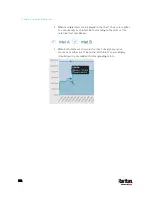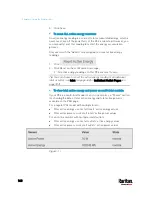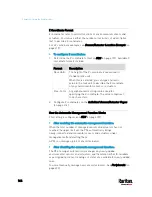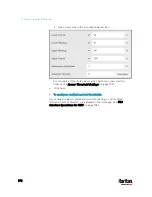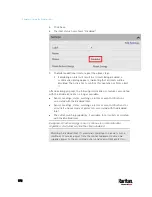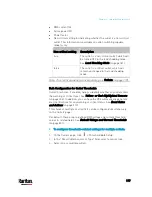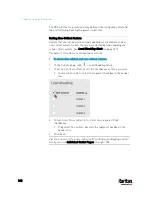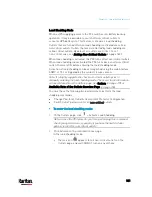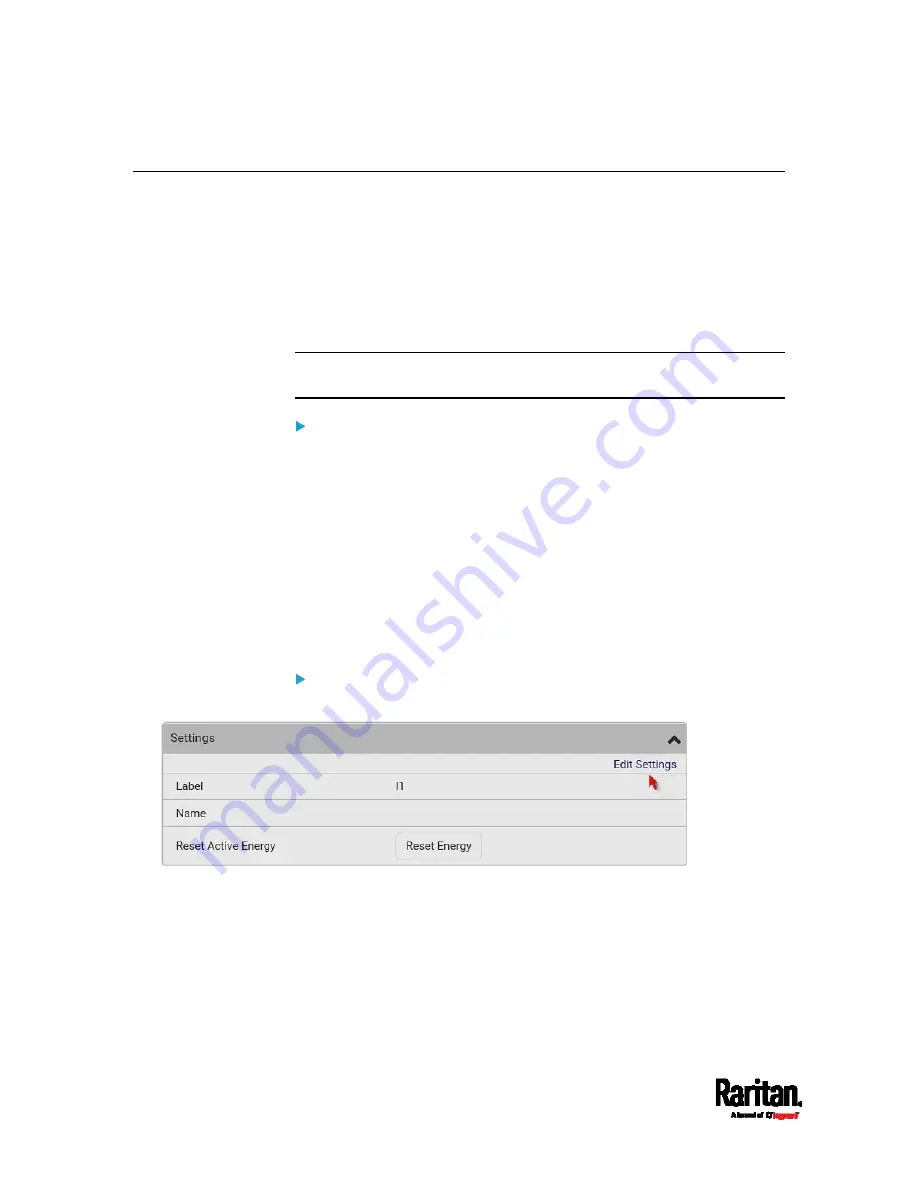
Chapter 6: Using the Web Interface
168
Inlet
You can view all inlet information, configure inlet-related settings, or
reset the inlet active energy on the Inlet page. To open this page, click
'Inlet' in the
Menu
(on page 139).
Inlet thresholds, when enabled, help you identify whether the inlet enters
the warning or critical level. In addition, you can have the PX3
automatically generate alert notifications for any warning or critical
status. See
Event Rules and Actions
(on page 312).
Note: If your PX3 is a multi-inlet model, see
Configuring a Multi-Inlet
Model
(on page 171).
Generic inlet information shown:
Inlet power overview, which is the same as
Dashboard - Inlet I1
(on
page 146).
A list of inlet sensors with more details. Number of available inlet
sensors depends on the model.
Sensors show both readings and states.
Sensors in warning or critical states are highlighted in yellow or
red.
See
Yellow- or Red-Highlighted Sensors
(on page 206).
Inlet's power chart, which is the same as
Dashboard - Inlet History
(on page 152)
To customize the inlet's name:
1.
Click Edit Settings.
2.
Type a name for the inlet.
For example, you can name it to identify the power source.
3.
Click Save.
4.
The inlet's custom name is displayed on the Inlet or Dashboard page,
followed by its label in parentheses.
Summary of Contents for PX3-3000 series
Page 5: ......
Page 18: ...Contents xviii Index 841...
Page 93: ...Chapter 4 Connecting External Equipment Optional 69...
Page 787: ...Appendix J RADIUS Configuration Illustration 763 Note If your PX3 uses PAP then select PAP...
Page 792: ...Appendix J RADIUS Configuration Illustration 768 14 The new attribute is added Click OK...
Page 793: ...Appendix J RADIUS Configuration Illustration 769 15 Click Next to continue...
Page 823: ...Appendix K Additional PX3 Information 799...

